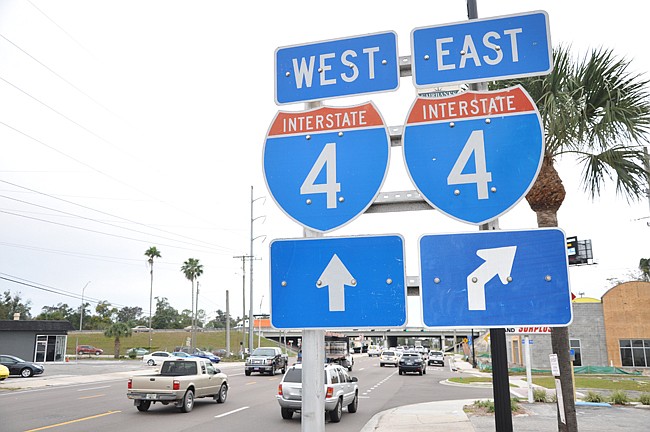- April 26, 2024
-
-
Loading

Loading

One of the most notorious stretches of Interstate-4 known for crashes may still be a danger zone, despite road improvements specifically designed to make it safer.
A young woman was killed and two more were injured on Friday at around 2:20 a.m. as a 1999 Toyota Camry crashed along the Fairbanks Avenue curve on I-4. Orlando resident Ashleigh Maria Plazas, 22, was heading westbound in the car when she crashed into the inner concrete barrier wall.
Plazas was thrown from the vehicle and killed as the car swerved right and hit a guardrail, overturning twice and rolling down into an embankment. Passengers Kristen Michele Bartus, 22, and Skyler Morgan Stout, 21, suffered only minor injuries.
Florida Highway Patrol officers are unsure of what caused the vehicle to lose control, but damaged, unopened beer cans were spotted near the site of the wreck, said Sgt. Kim Montes of the Florida Highway Patrol.
The Fairbanks Avenue curve has become known for deadly crashes, especially during rainy weather where the road becomes slick. Many semi-trucks have jackknifed trying to maneuver around the turns at high speeds.
In 2012 the strip of road saw 15 crashes on one Sunday alone when Tropical Storm Debby hit, according to the Orlando Sentinel.
“It’s not that it’s a dangerous road,” Montes said. “The problem is drivers travel too fast on I-4 around this curve. The speed limit is 50 mph, and that’s for optimum conditions when it’s not wet, not foggy and not raining.”
“There are troopers that have told me they’ve caught people going 100 mph while approaching that curve. It’s been an ongoing problem for years.”
But Friday’s crash came almost three years after safety improvements were made to that section of highway, including drainage upgrades, re-paving and new flashing signs.
Two more victims nearly lost their lives last November after crashing into a wall along the stretch, escaping from their car moments before it went up in flames.
Montes said the number of crashes has still decreased thanks to the improvements. The number of semi-trucks that have jackknifed along the slippery slope has also gone down, she said.
“We saw a significant decrease in the number of crashes that we had there because the water was draining better,” Montes said. “Do we still have crashes there? Yes, and the roads were wet last week when this crash happened.”
The I-4 expansion project starting construction next month could offer the best solution. More lanes would be added between Kirkman Road and State Road 434, and the Fairbanks Avenue curve would be straightened out, Montes said.
Drivers can also expect four new tolled express lanes and 13 widened bridges once the project is completed in roughly six years.
“The Fairbanks Curve previously had the highest accident record along the I-4 corridor,” read the project website, offering a glimpse of what the new highway will look like. “Now drivers will notice the roadway has been realigned to increase the sight distance and improve safety. An additional auxiliary lane between Princeton Street and Fairbanks Avenue increases the capacity of the roadway, allowing more cars to move through the once over-capacity area.”
The crash on Friday is still under investigation.